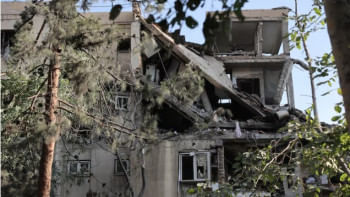'Russia to use safest nuke technology'
"> Igor KorolchenkoRussia would install its top-notch and safest VVER nuclear reactor in the Rooppur power plant that comply with all post-Fukushima international safety regulations, said Igor Korolchenko, head of construction of the project.
Igor KorolchenkoRussia would install its top-notch and safest VVER nuclear reactor in the Rooppur power plant that comply with all post-Fukushima international safety regulations, said Igor Korolchenko, head of construction of the project.
“It will be a pressurised water reactor. This is the safest technology available today, having clocked 1,500 reactor-years of accident–free operation,” said Korolchenko in an email interview.
Rosatom, the Russian state nuclear power company, would provide the nuclear power plant.
Preparatory work at the site would begin in January, 2014, and the main construction phase, which would take about 5 years, would start in 2015.
The Russian side was planning to commission the Rooppur nuclear power station in the beginning of 2020, he noted.
“The station will be designed with an effective combination of active and passive [operating without human intervention on the basis of natural forces] safety systems,” he said.
These would include rapid boring system, passive heat removal systems, and a molten core catcher. Together, these features would make the Rooppur nuclear power station one of the latest third-generation reactors.
On whether the Rooppur nuclear power station would be able to withstand earthquakes, hurricanes and other natural disasters, he said the plant would comply with all the “post-Fukushima” international safety regulations.
Its generating units would have a double containment shell capable of withstanding the impact of an aircraft weighing up to 400 tonnes (more than the dry weight of the largest commercial airliner), an earthquake measuring eight on the Richter scale, and hurricane and tornados winds with speeds up to 201.6km per hour.
On how the reactor would handle an incident if it occurred, Korolchenko said, “Backup water tanks will ensure an uninterrupted supply of water to the reactor to cool it down. This is also an automatic process, based on the forces of nature. Basically, the tanks are located higher up than the reactor.”
“Fire-protection systems which operate without human intervention or control will prevent a rise in pressure and temperature inside the containment shell. And it's also worth mentioning other safety systems such as the hydrogen recombiners. Hydrogen became a real problem at the Fukushima [a plant in Japan], causing a series of explosions.
“Hydrogen recombiners installed beneath the containment shell prevent hydrogen from forming.
“Their function is to accelerate the chemical reaction between oxygen and hydrogen, resulting in the formation of water. In other words, in our stations a repeat of Fukushima is impossible in principle,” he said.
He said a 2011 intergovernmental agreement states that the spent nuclear fuel would be returned to Russia, and this could also be seen as a safety feature, as it reduces the quantity of hazardous material in the country.
On June 27, Rosatom's affiliate company NIAEP-ASE and the Bangladeshi Atomic Energy Commission signed a contract on the development of design documentation for a Justification of Investment in Construction and an Environmental Impact Assessment for the Rooppur nuclear power station.
The contract also includes all the necessary site survey work and environmental studies for Bangladesh's first nuclear power plant.
On October 2, the opening day of the Rooppur construction site, another contract for the technical design work on the Rooppur power station was signed.
The contract gives the Russian general contractor two years to decide what size of reactors would be used at Rooppur and to do the basic design work, including the main technical documentation.
Rosatom currently has foreign orders worth $70 billion and is building 19 nuclear plants overseas.

 For all latest news, follow The Daily Star's Google News channel.
For all latest news, follow The Daily Star's Google News channel. 



Comments